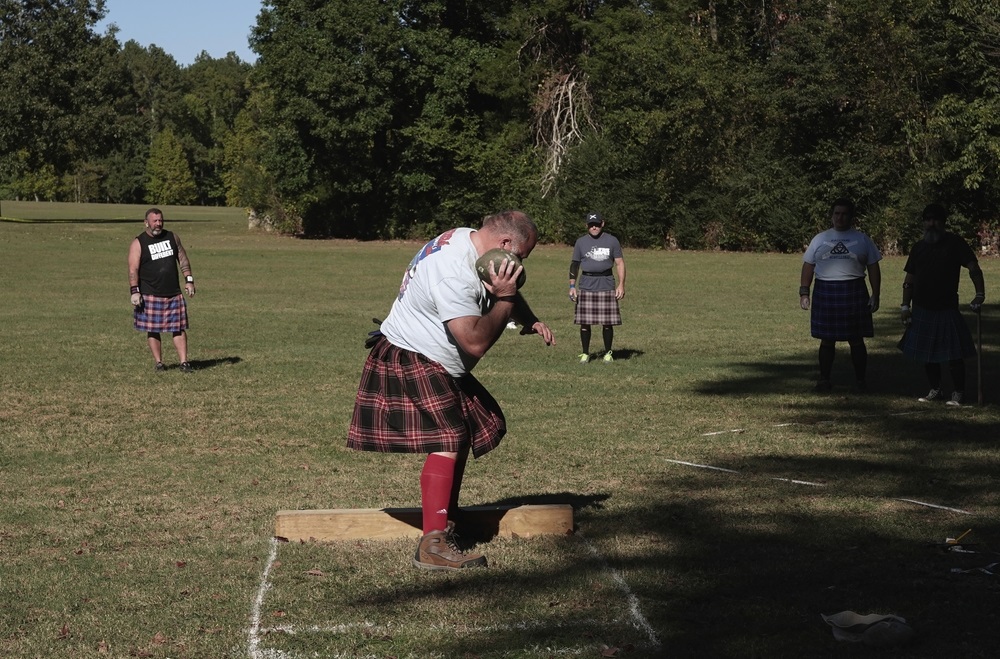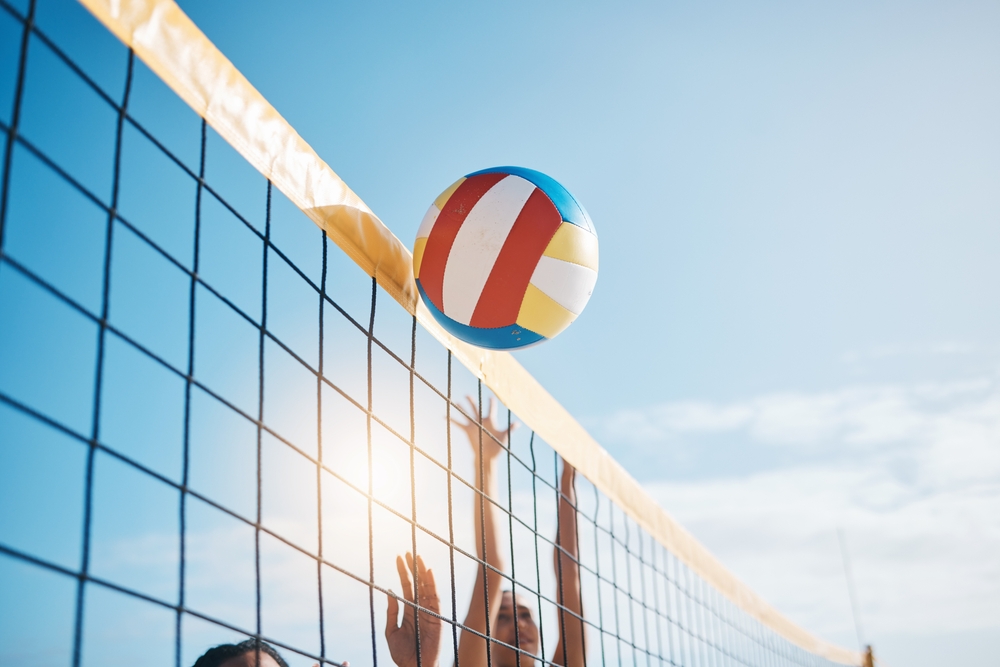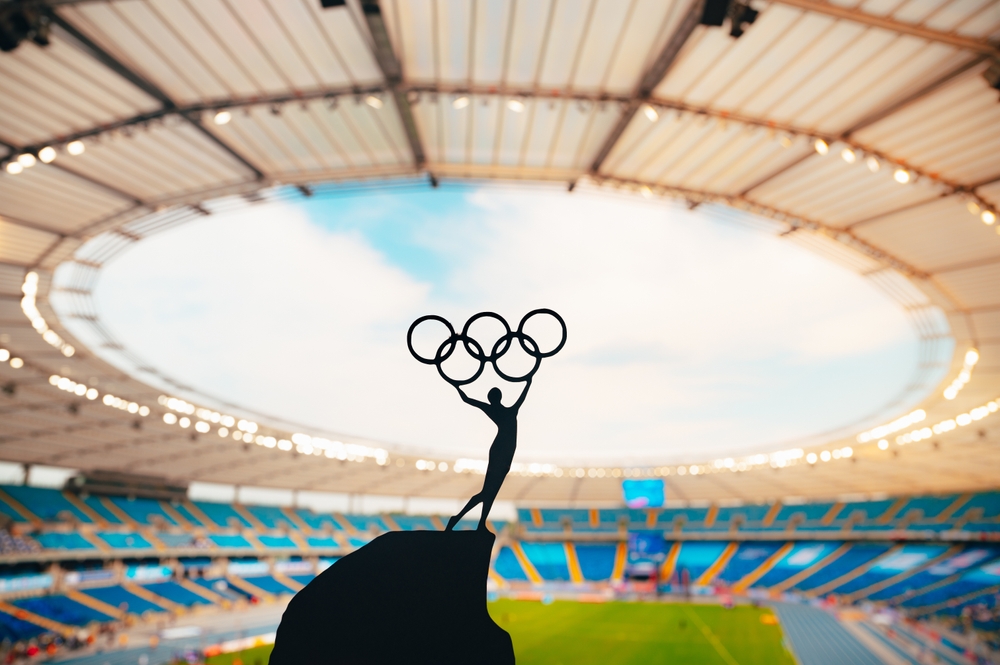The 2024 Olympic Games are here! From the opening ceremonies to the presentation of the medals, there’s something comforting in the time-honored tradition of it all. It may surprise you, then, to learn that little about the Olympics is truly set in stone. Every four years, the Games add new sports, change rules, and create new opportunities for taking home a shiny, shiny prize.
The first “modern games” took place in 1896 in Athens, and the list of sports on their roster might surprise you. Some notable favorites are missing. No basketball, no diving, no equestrian events, no soccer, no golf, no volleyball, and perhaps most significantly, no women’s sports! All 200-some participating athletes were men.
So in honor of this year’s games, here are the surprising origins of some of your favorite Olympic sports!


Basketball
Basketball is so popular that it feels like it must have been around forever, but in fact, it wasn’t invented until 1891. Professor James Naismith invented the game while working at the Springfield College (then the International YMCA Training School), hoping to create a fun indoor alternative to sports like baseball and football for the wintertime. The original game of “basket ball” (note the space) used peach baskets as goals— and somebody had to manually retrieve the ball after each ‘basket.’ They didn’t think to use bottomless baskets for almost 20 years!
Another innovation that wasn’t originally part of the sport: dribbling. Yes, it’s hard to imagine basketball without dribbling, but originally, players could only run without the ball or pass the ball without running. Dribbling was developed as a compromise about 10 years after the first game of basketball!


From the Highlands to the Olympics
Many Olympic events go all the way back to the Ancient Greek Olympics, notably the discus throw and javelin throw. But there are two other track and field throwing events with murkier histories. Where did the shot put and the hammer throw come from? There’s a good chance that they may have started in the British Isles.
The ‘hammer throw’ doesn’t involve any sort of hammer that you might recognize. It’s a heavy metal ball with a wire handle. Although sledgehammer throwing was a competitive sport in England and Scotland in around the 15th and 16th century (we’re glad we’re not there right now), hammer throw aficionados trace the sport back to the ancient Tailteann Games in Ireland. There, according to legend (and Encyclopedia Brittanica), a hero named Cú Chulainn won a contest of throwing a chariot wheel by its axel. Whether or not this can be linked to the modern version of the sport, the hammer throw is a famous part of the Highland Games, feats of athletics conducted in Scotland and around the world since the 19th century.
It’s easier to trace shot put to the highlands. “Putting the heavy stone,” as it’s often called in the Highland Games, dates all the way back to first-century Scotland. Throwing big heavy rocks: a time-honored tradition! The modern-day shot put isn’t just a heavy rock, though. It’s a perfectly spherical weight of uniform size and shape.


Golf
Speaking of Scotland, the first documented mention of golf pops up in a surprising place: a 1457 document issued by James II of Scotland that officially banned the sport. The craze had swept the nation and the king worried that soldiers would become distracted from their archery practice. In those days, golf consisted of hitting a pebble around obstacles with a club or bent stick, which sounds pretty difficult to ban. Another King James lifted the ban less than 50 years later. In fact, records exist of James IV’s purchase of “golfe clubbes and balles.” From banning the sport to playing themselves, the kings of Scotland will forever be intertwined with golf!
But did golf really originate in Scotland? Nobody knows! The simplicity of the sport means that similar practices showed up around the world. Some experts believe that a Chinese game called chuiwan (or “striking small ball”) was the first form of golf. Chuiwan became popular as early 8th century—long before King James began to worry about the hot new fad preoccupying his archers.


Volleyball
Can you imagine a picnic on the beach without volleyball? It’s hard to picture summer in the USA without it. It may surprise you, then, to learn that the sport wasn’t invented until 1895, four years after basketball! In fact, it shares quite a bit with basketball. Both were invented by physical education directors at the YMCA. Both were originally written as two words: “basket ball” and “volley ball.” And volleyball’s inventor, William G. Morgan, was a former student of James Naismith, the creator of basketball!
How did volleyball catch on in popularity outside the USA? Believe it or not, through World War I. YMCA instructors serving in the war helped popularize volleyball as a leisure activity across Europe. Volleyball became an Olympic sport in 1965 and its summery sibling, beach volleyball, joined in 1996. Oh, and one more thing: even before volleyball was called ‘volley ball,’ it bore a different name. Because Morgan based the sport on badminton, he initially called it mintonette. We like volleyball better!


Gymnastics
Gymnastics has always been part of the modern Olympics, and it was part of the Ancient Greek Olympics long before that. Still, the gymnastics of Ancient Greece bore little resemblance to the sport today. The name itself might give you a hint as to why: it derives from the Greek for “to train naked.” These feats of strength and agility were originally performed in the nude, and only by men.
Later Greek philosophers linked the development of the body to that of the mind, and so gymnasiums became schools where students were educated while pursuing physical fitness. To this day, university prep schools in Germany and some other countries are called gymnasiums.
The modern practice of gymnastics was, in fact, popularized by a German (or Prussian, at the time) educator named Friedrich Ludwig Jahn in 1811 as a way to strengthen the morale of his countrymen after being clobbered by Napoleon. The first gymnasium in the USA opened less than 15 years later. As for women’s gymnastics, that arose about a century thereafter. Still, many “gymnastics” exercises in the first half of the 20th century didn’t bear much in common with the apparatuses we know today. A few abandoned gymnastics events include rope climb, horizontal ladder, and synchronized team floor exercises!
Which of these surprised you most? What’s your favorite Olympic event? We’d love to hear about it!



